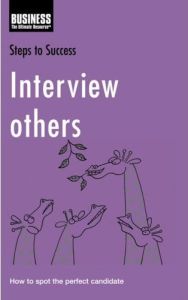Join getAbstract to access the summary!

Join getAbstract to access the summary!
Lorenza Clifford
Interview Others
How to spot the perfect candidate
A&C Black, 2006
What's inside?
Finding the right person for the job is not easy. Use these interviewing techniques to spot and land the best candidate.
Recommendation
You might be a good judge of character, but when it comes to hiring, going by your “gut” is not always advisable, at least not according to career coach Lorenza Clifford. In fact, she warns that doing so could cost you time and money, and even worse, land you in a courtroom. In this handy little guidebook, Clifford breaks down the essentials of the interview, a pivotal aspect of the selection process. She succinctly details the process from composing the best set of questions and handling different types of interview conditions to making a job offer (or deciding not to). Clifford identifies common pitfalls, particularly lack of objectivity. She summarizes each chapter and provides links to related Web sites. However, for a book devoted to interviewing, it is strangely shy of a softer, human element. Still, it is, by and large, both practical and solid. getAbstract thinks you’ll find this quick, instructive manual very useful as a short course on the art of the interview.
Summary
About the Author
Lorenza Clifford is a career coach with more than a decade of experience. She is the founder of a coaching consultancy.

















Comment on this summary